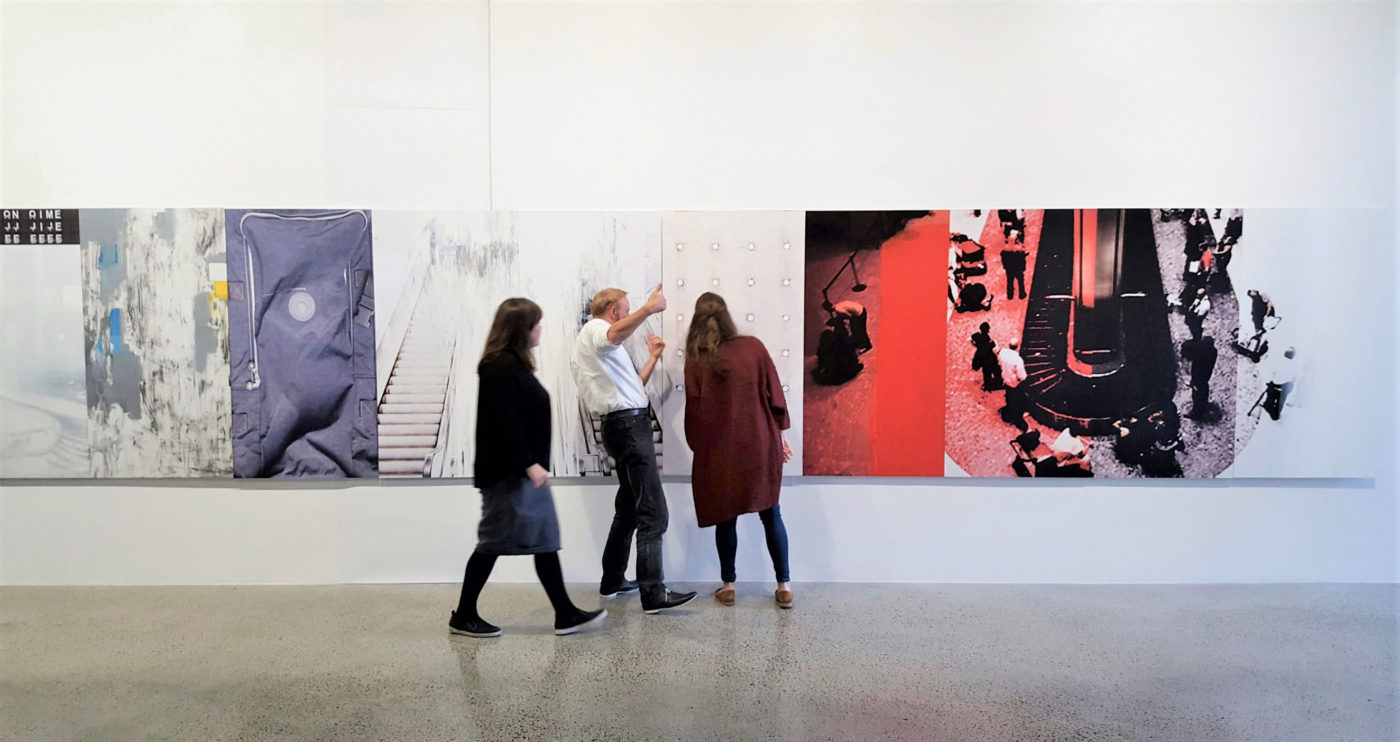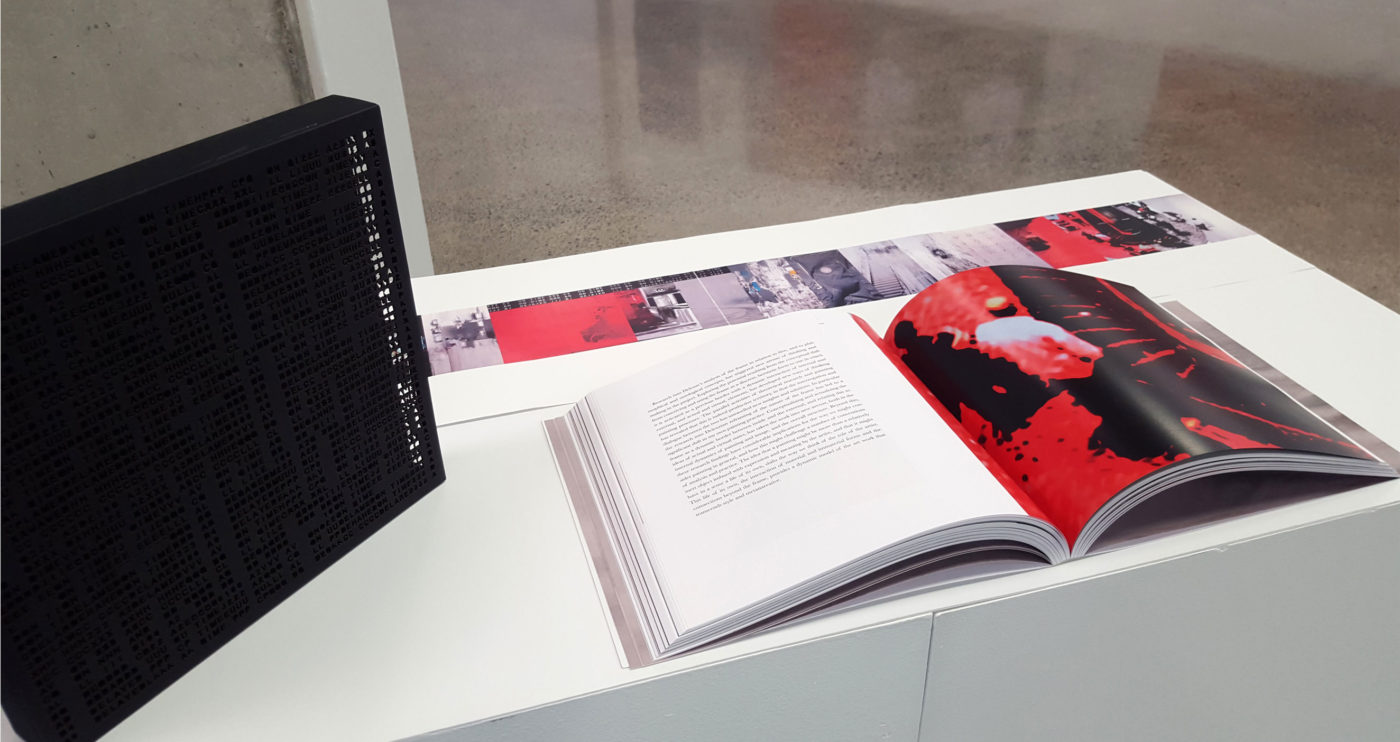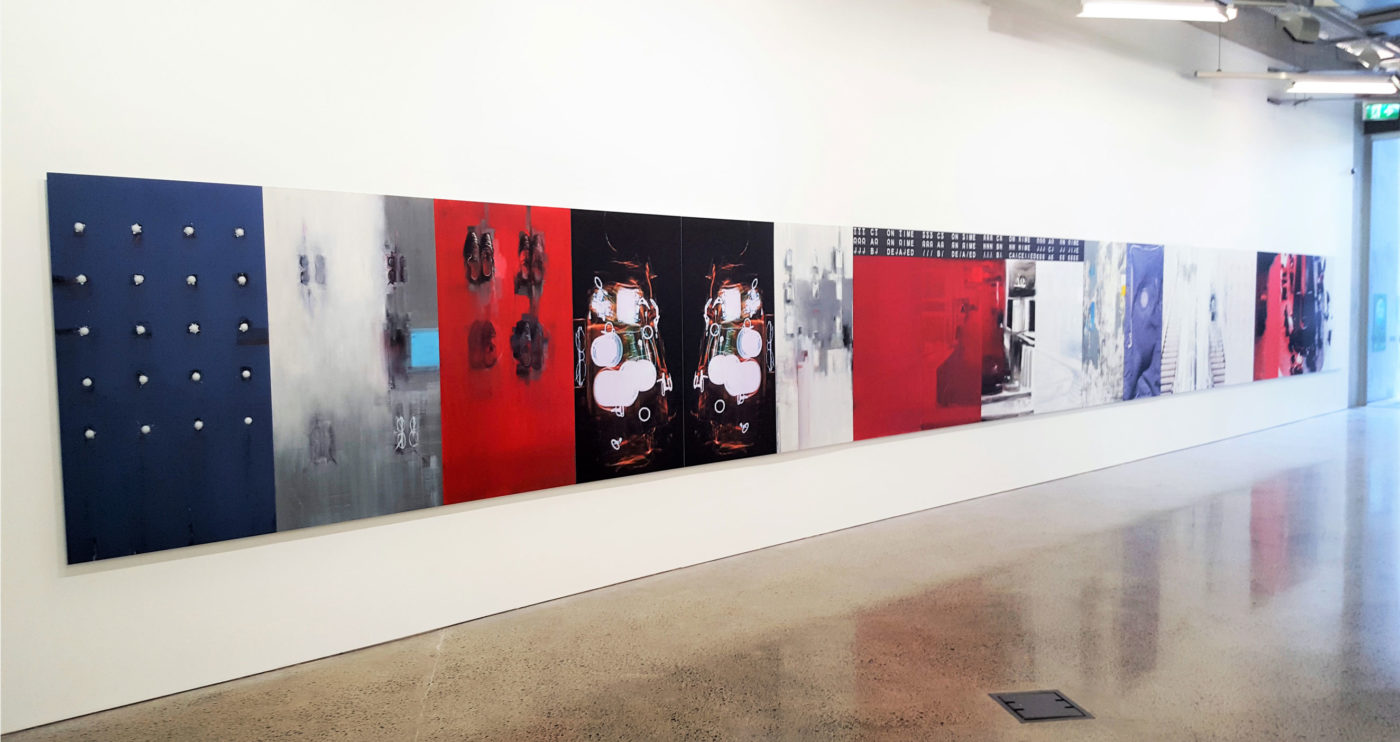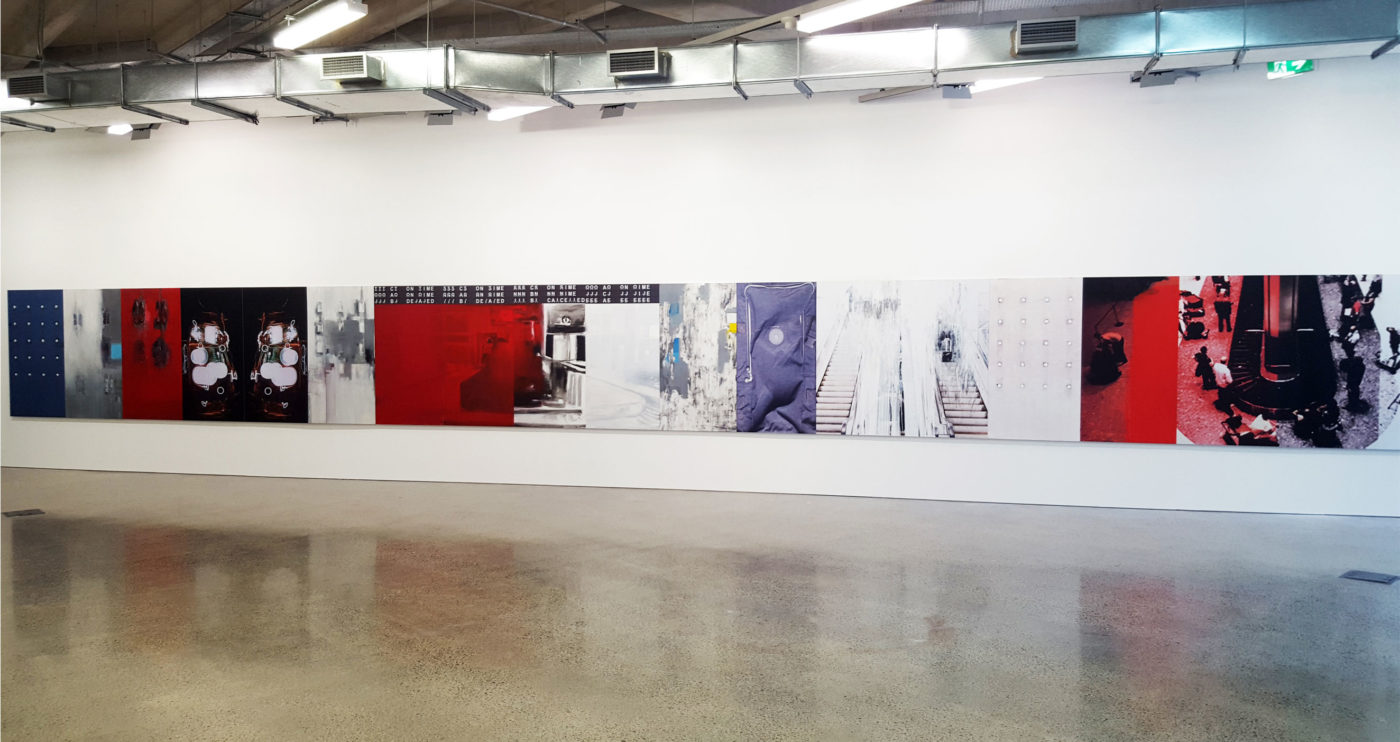





Painting and Time: The dynamic of the actual and the virtual is a practice-led thesis exploring imagery and association derived from the transit space of travel. This is a place where time is highly coded, where the traveller is made hyper-conscious of the immediate past, the present and the imminent future. Our personal time of waiting, anticipation and anxiety collides with a globalised and controlled time. Using painting and photographic processes, the project engages with a spectrum that spans moments where time becomes almost visible, to broad, abstract concerns with time and being. The airport transit space is a time zone, where clock time, global and coded time collide and compete with personal and experienced time.
Underpinning the studio and written work is an exploration of actuality and virtuality, the visible and the invisible, and a proposition that these two states are inherent in all things, they interact and define each other, and are the determining drivers of change and becoming. Alongside the artwork, the project aims to provide a set of critical perspectives regarding the nature of time and change that might have applicability to other visual arts practices.
The exegesis considers a range of material related to the topic. Of significance in the theoretical underpinning and development of my painting practice is Deleuze’s philosophical enquiry into time, which is in turn indebted to Henri Bergson’s notion of duration, first developed in Time and Free Will, 1989. The thinking of subsequent theorists including Elizabeth Grosz (1999; 2005), Jeremy Gilbert-Rolfe (1996), Manuel DeLanda (2000; 2005), and David Rodowick (1997; 2002), who build on Deleuze’s analysis of the nature of time, and of the actual and the virtual also contribute to this painting practice. Deleuze constructs not only a dynamic, radical view of the nature of time, but he also looks to the creative process as an arena of thought equivalent to philosophy, allowing for an on-going interaction between the two modes of practice. Over the duration of the project, research and writing engage in a productive dialogue, challenging and generating new ideas and outcomes. The thesis culminates in an exhibition of artwork and an exegesis. The final outcome of the research is a single painting fifteen metres in length. In an analogous structure to cinematic form, it has both a linear and a non-chronological form. The work shifts back and forward in time, and in the framing and repeating of images inside and outside the frame, it decodes and claims a new space for virtual associations and memory. Entering into this experiential zone through the creative act is the closest we might come to visualising a multiple and mobile notion of time, not pervaded by the mechanics of clock time.
The intention of the thesis therefore is to explore this notion though a temporal model of practice informed by a specific concern with actual and virtual elements that construct reality. In particular Gilles Deleuze’s idea of reciprocal determination provides not only a dynamic, agnostic1 model of existence and the nature of change, but finds analogous form in the work explored throughout the thesis project. The hybrid forms of abstraction and representation explored are intended to create a parallel form to the theoretical dynamic of mutual interaction and determination. The result of this dual process is a new and reclaimed transit space that unravels a deep experiential layer through poetic form.
An initial interest in a temporal model for the making and analysis of creative practice gradually unravelled a more specific concern with actual and virtual elements that construct reality. Deeper research into Deleuze and subsequent theorists in the area, revealed a strong potential link with art practice. Deleuze’s idea of reciprocal determination, in particular, provided not only a dynamic model of existence and the nature of change, but found analogous form and practice in my own painting.
In the transit spaces of air travel, the private life of the traveller, and the worlds of desire and anticipation, collide with the scrutinised, processed and codified. There is a resultant simultaneous loss of a sense of personal time, and a hyper-realisation of time. Waiting and boredom slow the pace of time. The traveller is robbed of time, yet bound by codes of timing, control, and the globalisation of time. It is in this strange, yet disconcertingly banal, space that this thesis is positioned. Zooming in from the broad temporal experience of travel and transit, its lens focuses into moments and events that appear to make visible the invisibility of time, transition and becoming. In this realm of the everyday experience of travel at the moment of stasis, the public and the intimate coexist. The discontinuous moment of transit and the disruption of narrative allow concentration on a wealth of temporal moments, associations, and states.
The thesis is based in both art practice and philosophical enquiry; the social and cultural dynamics of the transit space sitting outside the frame of the work. Connections are constructed through association and implication rather than being described through immediate image and narrative. The place and experience of transit is a highly charged space. Here the personal and the public collide, and the physicality of movement and travel is subsumed by virtuality and codification. Within this, the sense of personal space and time is lost in a global network of controls.
Dodge and Kitchin propose that
… air travel has become a real virtuality par
excellence, seamlessly blending the material (travel)
and virtual (networked communication) – … to produce
new spaces that facilitate the space of flows and timeless time.
These new spaces we call ‘code/spaces’ – spaces in which the materiality of air travel is
produced through information and communication technologies … which
are themselves produced through spatial mobility.
(DODGE & KITCHIN, 2004, P.197)
In this strange, isolated, yet disturbingly familiar, world we move almost as figures in a diagram or board game. In the structural abstraction of this transitory space there are isolated moments, states and events that by their function are already diagrammatic, obscure and coded. The transit space is a potent space/event for the exploration of time; as movement, as the interaction of the actual and virtual, of past, present and future as process, and the simultaneous obsession with, and loss of, identity.
The aporia of the coexistence of phenomenological and cosmic time, of the simultaneous workings of the singularity and multiplicity of time, of the evasiveness and invisibility of time, remain aporias in a scientific paradigm. These problematics become fuel to the machine of creative practice, however. In 1969, French Philosopher Gaston Bachelard challenged many of the mechanical and scientific notions of the nature of space in a work titled The Poetics of Space2.